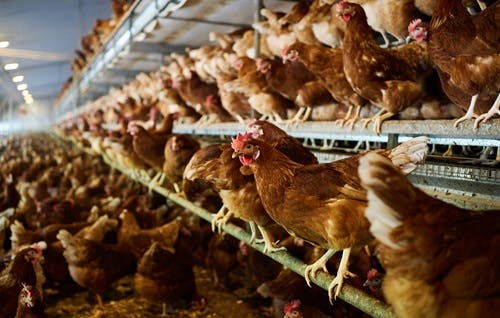Salmonella Control in Poultry: An Overview for Laying Hen Producers
Salmonella control is a top priority for poultry producers, particularly those working with laying hens. Implementing a robust food safety programme is crucial for protecting human health and ensuring consumer and retailer trust. This article addresses common questions about Salmonella in poultry and provides actionable insights for effective prevention.
The Importance of Salmonella Control
Salmonella can be a food safety concern worldwide, with Salmonella Enteritidis and Salmonella Typhimurium causing a substantial number of foodborne illnesses and even deaths in humans. While healthy chickens can carry Salmonella without showing symptoms, some strains of the bacteria pose a severe threat to vulnerable groups, including the elderly, young children, and individuals with weakened immune systems. Salmonella can be transmitted through contaminated poultry products, making its control essential for human health. Therefore, a comprehensive food safety programme that incorporates measures to mitigate Salmonella in poultry, especially in laying hens, is vital.

Prevalence of Salmonella in the UK
The UK poultry industry has made significant strides in reducing Salmonella prevalence. Due to stringent control measures introduced in the 1990s, Salmonella Enteritidis and Salmonella Typhimurium in laying hens has decreased substantially. The Lion Code of Practice, a gold standard worldwide for poultry Salmonella control, mandates Salmonella vaccination, biosecurity protocols, pest control, and frequent Salmonella testing. These measures have contributed to the UK's success in minimising the Salmonella risk in poultry.
Effective Salmonella Control Strategies
Implementing a robust food safety programme is the cornerstone of Salmonella prevention. Key components of such a programme include:
- Poultry farm biosecurity: Strict biosecurity measures are vital to prevent the introduction and spread of Salmonella within poultry flocks. This includes controlling access to poultry houses, providing farm-specific clothing and footwear, and regularly cleaning and disinfecting equipment. Implementing robust biosecurity for laying hens is critical for producing Salmonella-free eggs.
- Pest control: Rodents, such as mice, can harbour and transmit Salmonella. A rigorous pest control programme is crucial to eliminate these vectors and prevent the bacteria's spread within poultry houses.
- Flock management: Multi-age housing can increase the risk of Salmonella transmission between flocks. Single-age housing and thorough cleaning and disinfection of poultry houses between flocks are recommended for effective Salmonella control.
- Poultry vaccination: Vaccination is a cornerstone of Salmonella control in laying hens and is mandatory under the Lion Code. AviPro™ Salmonella Duo is a dual-strain live vaccine that provides superior direct protection against both S. Enteritidis and S. Typhimurium.1,2 Administering this poultry Salmonella vaccination according to the recommended poultry vaccination schedule ensures early protection and reduces the poultry Salmonella risk.
Focus on Food Safety
Prioritising food safety and incorporating the recommended Salmonella control measures will help minimise the poultry Salmonella risk and protect human health. As the Salmonella risk in eggs has reduced significantly in the UK, maintaining the current approach to Salmonella prevention in laying hens is essential for upholding consumer confidence and ensuring safe, high-quality eggs.
To find out more about our comprehensive Salmonella control solution for poultry, visit our AviPro™ Salmonella Duo website:
- Koerich, P. and Doblies, D. Comparison of the efficacy of a live bivalent Salmonella vaccine with a monovalent vaccine against a challenge with a Salmonella Typhimurium field strain. IPPE International Production & Processing EXPO, Atlanta (2023).
- AviPro Salmonella Duo Summary of Product Characteristics compared to two other SE live vaccines